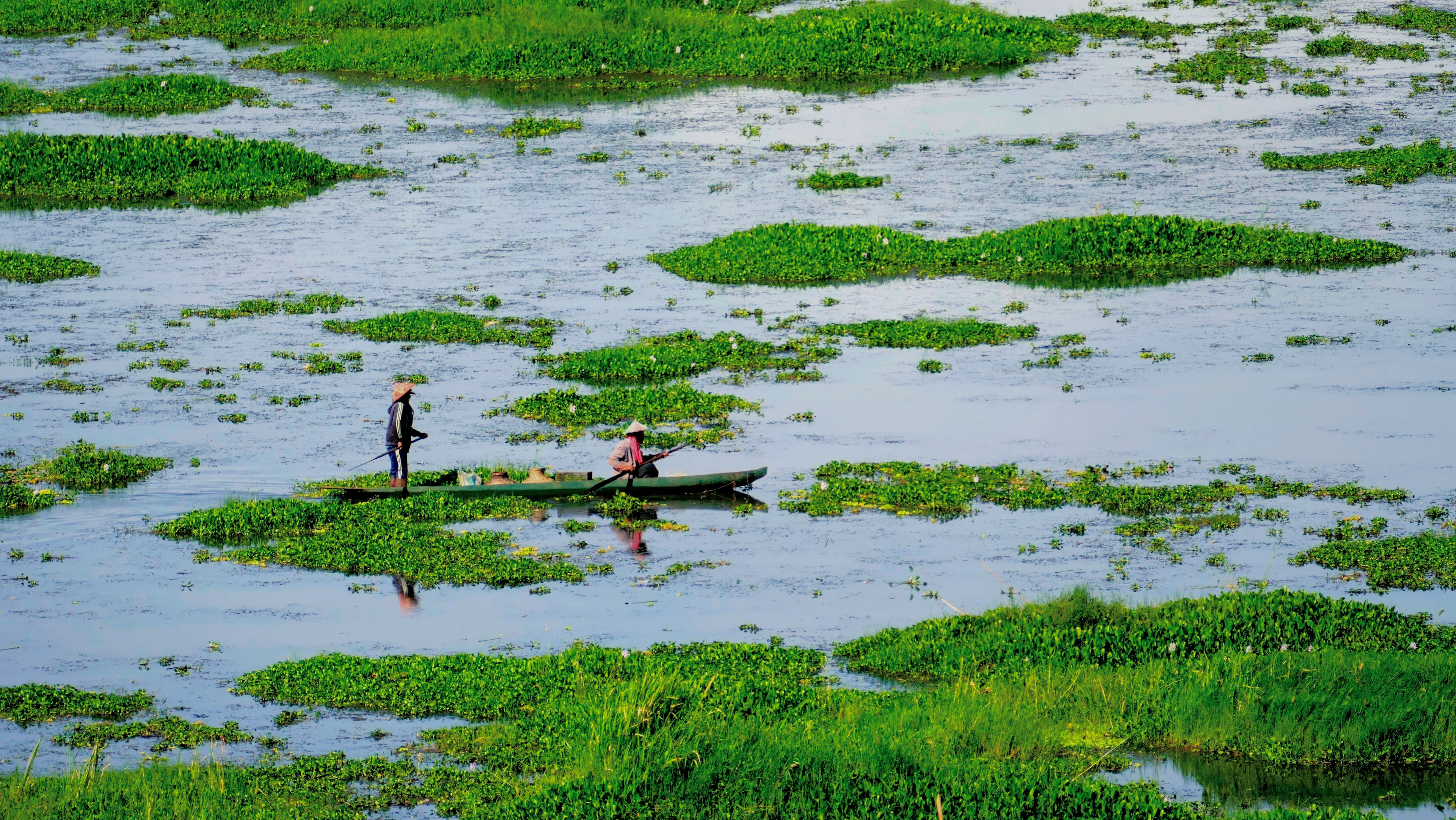27 Jun, 2025
What does a bee teach us about ecosystems?
At the Indian Conservation Conference (ICCON 2025) last month in Dehradun, this question came to life in an unexpected way. Dr Erach Bharucha, one of India’s respected voices in wildlife and nature conservation, shared a detail that caught everyone’s attention:
“A bee’s wings, moving fast through the air, pick a positive electric charge around its body. Flowers, on the other hand, connected to the ground, carry a slight negative charge. Because of this opposite polarity, when a bee approaches a flower, the pollen actually jumps onto the bee, defying gravity. When the bee moves on to another flower, it carries pollen with it, helping plants cross-pollinate”. It is possible that this static electric charge allows the tiny forager to know which flowers have been recently visited by another pollinator, and have lost the negative charge, allowing the bee to save time and energy in its foraging journey.
“These are the kinds of fascinating details in many of the ecosystem services and their processes, which we really need to dig into much more deeply.”
And it was these interdependencies and relationships of ecosystems, their services and their users that were discussed in the four days of ICCON. We had the opportunity to Wildlife Institute of India, Dehradun, for pre-conference workshop on ecosystem services & climate change and a technical session on aquatic ecosystems in this biennial conference brought together over 500 participants including researchers, conservationists, policymakers, students, and community leaders to connect science with real-life solutions.
Along with thematic lead by different projects from IGBP, we had Dr A.K. Gupta (former Principal Chief Conservator of Forests, Tripura), Dr Vishal Singh from CeDAR, and Dr Erach Barucha providing technical guidance in the pre-conference workshop. The idea was to work with early career researchers to orient them towards science that works towards solving issues on the ground.
We touched upon the themes of how forest fires impact landscapes, release carbon, and threaten livelihoods. But they are also, in some cases, essential for communities who use them in a controlled manner. Managing fires, thus, means balancing local needs with ecosystem health.
We also spoke about wetlands—multi-use ecosystems that absorb floodwaters, store carbon, support livelihoods, and host various lifeforms. But they face threats from pollution, unplanned development, and land-use changes. Protecting wetlands is about their wise use, bringing together various stakeholders.
During the workshop, Dr Gupta explained why valuing nature is not putting a price on it, but to recognise what often gets overlooked because they do not show up in markets or budgets. Dr Gupta shared simple tools like participatory mapping and community discussions to help bring these values into focus. In the technical session on aquatic ecosystems, we had six presenters from various institutes touching upon various research streams from inland biodiversity, monitoring ecosystems to traditional knowledge,
 Local fishermen return home with the day’s catch, gliding through the floating Phumdis Of Loktak Pat |
Local fishermen return home with the day’s catch, gliding through the floating Phumdis Of Loktak Pat |
© Mr Akoijam Santikumar Singh
Mr Akoijam Santikumar Singh, one of the presenters, talked on “Adaptive capacity of local communities around Keibul LamjaoNational Park in Manipur, Northeast India. He discussed the various on the various showed that even neighboring villages respond differently to environmental change. Some adapt better than others. The reasons are not always about money. Sometimes it is about how people help each other, share knowledge, and work together.
His takeaway was clear: one-size-fits-all policies do not work. Solutions must grow from the ground up, shaped by the people living the experience every day.“Resilience policies must be context-specific,” he said. “Here, strengthening physical and human capital is key.”
This reminded us that conservation is about listening carefully. It is about recognising that nature and people are connected. And it is about building solutions that are practical, inclusive, and local.
At its heart, ICCON provided space for science, policy, and community to come together. We are glad to have been part of this journey. These conversations must continue, because something as small as pollen jumping onto a bee reminds us that nature’s work is often quiet, but essential.
Glimpse of Day 1: Workshop on Ecosystem Services and Climate Change
Glimpse of Day 2: Student Talk:
.jpg)
*
The Wetlands Management for Biodiversity and Climate Protection project aims to strengthen the institutional framework and capacities for an ecosystem-based integrated management of wetlands of international importance (Ramsar sites) in India. The project is implemented by the Deutsche Gesellschaft für Internationale Zusammenarbeit (GIZ) GmbH on behalf of the German Federal Ministry for the Environment, Nature Conservation, Nuclear Safety and Consumer Protection (BMUV) in partnership with the Ministry of Environment, Forest and Climate Change (MoEFCC) in close cooperation with the National Plan for Conservation of Aquatic Ecosystems (NPCA). This project is part of the International Climate Initiative (IKI). The Federal Ministry for the Environment, Nature Conservation, Nuclear Safety and Consumer Protection (BMUV) supports this initiative on the basis of a decision adopted by the German Bundestag. Read More
For more information contact: biodiv.india@giz.de
© 2014 IGBP. All Rights Reserved.
Site By: Virtualpages
